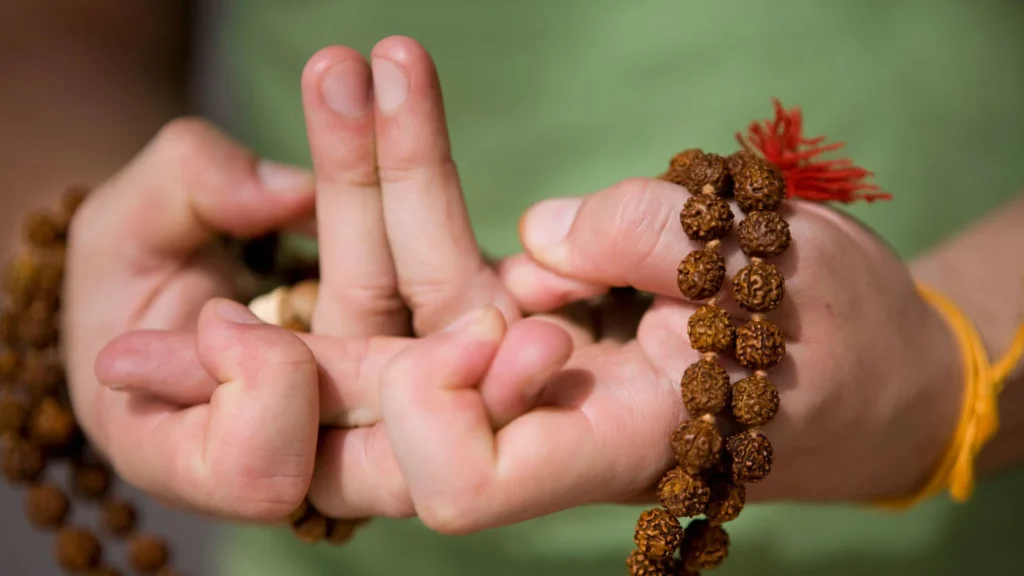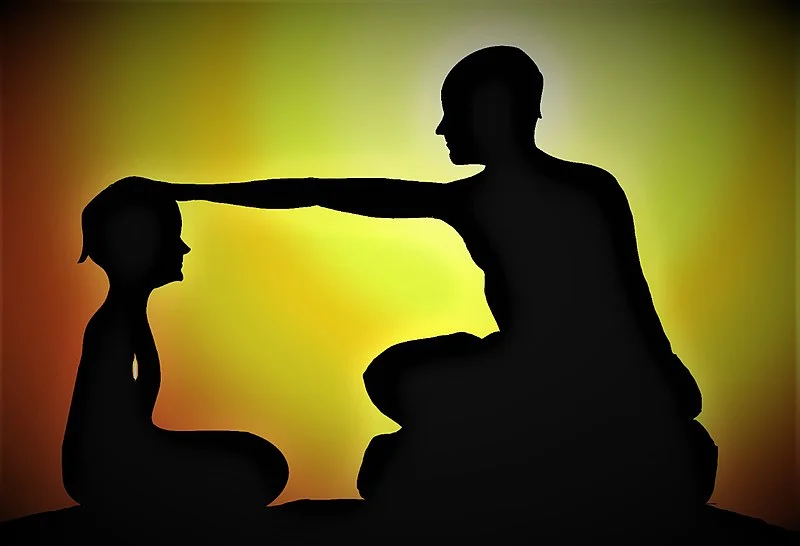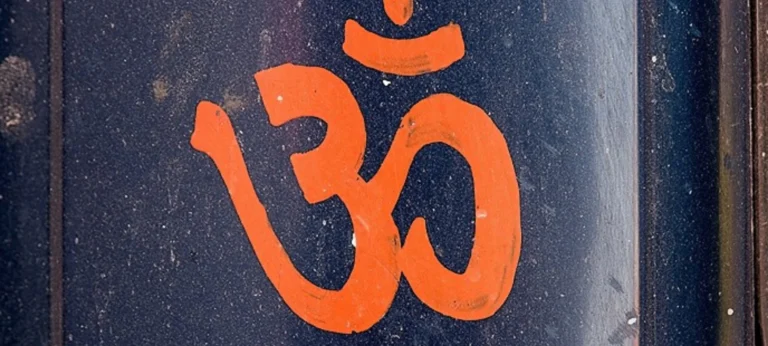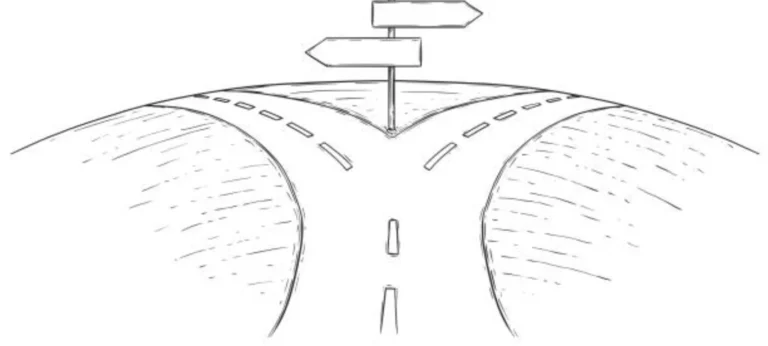Please Like the Blog and Share it for Maximum Reach
Table of Contents
Fundamentals of Pranayama
Pranayama is a very useful tool for awakening the sleeping Kundalini Shakti which is seated at the base of the spine. The practice of mindful breathing is Pranayama.
Often done along with meditation, Pranayama if done daily can yield many benefits like fitness, freedom from respiratory disorders, longevity and much more.
The spiritual shape of the Mooladhar Chakra is a triangle, located at the root of the spine. This is the prime house of Kundalini Shakti.
1) How to Do Puraka in Pranayama
Puraka is the 1st stage of Pranayama.
First, we close the right nostril with the right thumb. We inhale through the left nostril and count 3 ‘Om’ mantras while inhaling. It is important to add certain meditations while inhaling.
Consider visualizing the subtle Prana entering our body, via the nostrils, while breathing. Puraka is the process of inhaling.

Meditative visualization enhances meditation experiences. Becoming conscious of the Prana is the key for all Kundalini Sadhana.
Consciousness, a Need
Why must we consciously inhale? Well, we must be aware of the fact that consciousness creates reality! That is why Vedic Sciences and Meditation Processes stress on a healthy mind and a good thought-world.
Hence, concentrating on Prana and drawing it consciously shall be revitalize our entire body system. This is most effective when we inhale (Puraka) as well as meditate/visualize. This is the secret while we perform Pranayama.
2) How to Do Kumbhaka in Pranayama?
Next, close the left nostril with your little and ring fingers of the right hand. Retain the breath till you complete chanting 12 ‘Om’ matras. Retention increases with daily practice.

In Yogic terms, Kumbhaka is the process of retention. This is the 2nd stage.
The complementary meditative practice will be to visualize the Prana-nerve-current hitting the triangle (symbolic representation of the Mooladhara Chakra), present at the base of the spine.
Feel the Kundalini Shakti getting activated as you do ‘Kumbhaka’, retaining of the Prana.
3) How to Do Rechaka in Pranayama?
After Kumbhaka, now, slowly exhale the air through the right nostril for a count of 6 ‘Om’ mantras. This process of conscious exhaling is called Rechaka.
This is the 3rd and final stage of Pranayama.
It completes the breathing exercise, through one nostril. After completing Rechaka, your spine will feel relaxed and currents will flow through your muscles, further increasing your energy.

Repeating the whole cycle means starting with the right nostril as discussed above. To awaken Kundalini, the practitioner must have faith on the process.
Pranayama shall awaken Kundalini in a short time.
4) How Many Times Should You Do Pranayama?
3 cycles in the morning and 3 cycles in the evening of Kundalini Yoga is a good practice.
But, bear in mind that, only under able guidance of a guru should you carry out the whole process. This is mandatory.
Regularity and intensity of the practice are keys to achieving success in Kundalini Sadhana.
5) 6 Practices to Consider before Starting Kundalini Yoga.
Kundalini is the female energy which runs the world. She is Prakriti, in Vedic terms. She is Jagadamba (the mother of the world). There are some key practices that aid in the Kundalini awakening process.
1) Japa

Repetition of an authorized, Vedic mantra has the potency to clean the various layers of negativity. Negativity can be a result of previous life Samskaras and Vrittis that cycle, life afterlife. Hence, chanting Vedic Mantras cleans those layers so that Kundalini Shakti rises with ease.
2) Meditation
Meditating can be done on a form of Bhagawan like: Sriman Narayana, Sri Krishna or Sri Rama Also, some people meditate on abstract objects like: a flame of fire, space, planets, breath, or the universe.
These objects of Meditation are effective techniques to increase concentration.
There is a detailed explanation of these (form and abstract) 2 Types of Meditation in the Srimad Bhagavatham. It also gives a comparative analysis.
Now, concentration is important to bring all energies in alignment with Will-Power.
Indeed, concentration is rare to find in people these days. We expend energy due to which negativity sets in our minds, creating ruffles.
But, meditating on Bhagawan or an abstract form, forces all the mind’s energy on one centric point.
3) Kirtanam (Prayers)

Kirtanam means singing the glories of the Lord written or composed by enlightened beings.
Many people might undermine the potency of Prayers. But, in my personal experience, it is the most effective of all practices. It is the most effective tool, exclusively for the Yuga we live in, Kali Yuga.
Nama Sankirtanam, according to Bhagavatham is Yuga Dharma.
Meditation and Japa require an already evolved mindset. But, according to our great scripture, it is only Nama Sankirtanam that requires no prior qualification.
Meditation and Japa require a conducive environment and some necessary tools to be carried out. But, it is Naama Sankirtana or singing the praises of Bhagawan that we do not require any specific time, place, and circumstance.
I highly recommend prayers from the Srimad Bhagavatham for this purpose.
Test your Alignment with the Spiritual Subject Matter (only 7 Questions)
The scores generated in this Quiz are relative. There are no right or wrong answers. A percentage towards 100 indicates that you are more aligned to the overall subject matter.
6) Which Vedic Prayers are most effective?
Prayers of Queen Kunti, Sri Bhishmadeva, Suta Goswami, Shukhadeva Goswami, Dhruva, The elephant Gajendra are some of the most potent prayers I’ve encountered.
They are fully charged mantras as they were not ordinarily composed by any poet. In fact, they were the words of great personalities and were directly accepted by the Lord. So there is no room for doubt as they have been in close union with the Lord.
Today, the modern-day prayers composed by ordinary poets or singers may or may not have power. But, these are sure shot prayers that can invoke the grace of Bhagawan. Moreover, they are in Sanskrit, which is a highly spiritually potent language.
Another example of Kirtan is the Naam Sankirtana, Hari Nama Sankirtanam preached by Sri Chaitanya Mahaprabhu.
It is similar to Japa. But, the greatness is, it is sung aloud. Chanting aloud any Mantra becomes Kirtan.
4) Development of Virtues
This should be a conscious attempt from the end of the Sadhaka.
Following the right role model is highly crucial. I must say, nobody today can be the perfect role model. Everybody fails somewhere or the other.
But, following authorized people makes our attempt to become virtuous more legitimate.
Following the teachings of Vedic scriptures and ancient seers is the only way to go ahead. We must expand our knowledge of the scriptures to be able to succeed in the attempt of becoming virtuous.
Only then can our thoughts be pure.
Only a person with clean character can awaken his Kundalini and use its potency to the maximum.
Until then, fear, anxiety and survival fears shall keep cropping up.
5) Truth

Speaking the truth is close to Godliness.
It is the most prized quality and is highly praised in the Vedic scriptures.
Today, speaking lies has become the language of the common man. But, our fundamental nature is pure, unsullied jiva, the soul. So, it is necessary that when we are doing Kundalini Sadhana, we must consciously speak the truth and awaken our essential nature.
Kundalini is energy personified. It is pure energy.
So, naturally, it will circulate effortlessly in a non-dubious person. Speaking the truth must be adopted at the earliest.
6) Non-violence
Non-violence is a saintly quality.
Violence is a symbol of conflict between the mind and external circumstances.
Nobody can pretend to be Non-violent. Hence, it can only happen when there is a deep sense of realization that Violence is not a solution for any problem.
The above 5 practices, if done with sincerity automatically instills non-violence in the practitioner. When we hold calm, Kundalini Shakti gets a scope to manifest.
7) How to start Kundalini Sadhana?

Only under the guidance of an able teacher should you begin Kundalini Yoga. This is important to retain a proper balance of mind and body.
An adept Guru saves the practitioner from the eyes of the world. Moreover, he guides and controls the Sadhaka so that the veils of Maya does not trap him/her.
Before one makes up one’s mind to start Kundalini Yoga, one should be aware of what might follow after a prolonged, sincere attempt.
Therefore, be mentally prepared for many Shocking Experiences During Kundalini Sadhana, as they are bound to crop up.
Please Like the Blog and Share it for Maximum Reach






